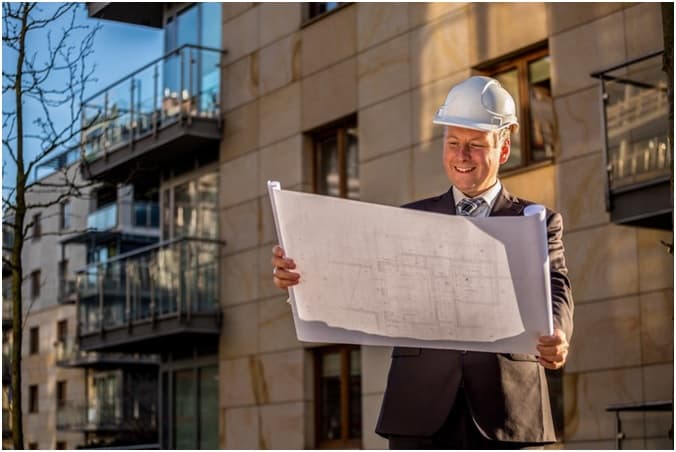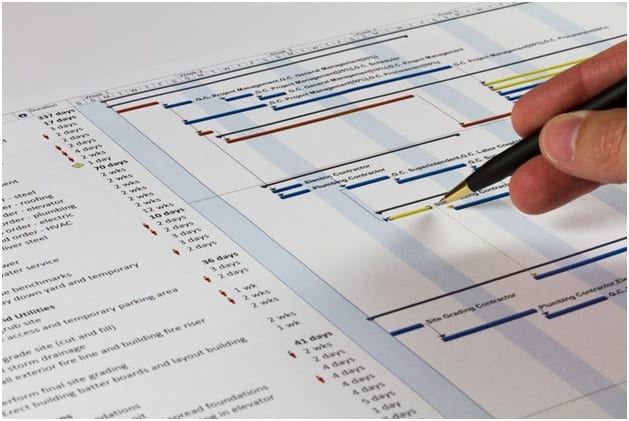
General contractors play a pivotal role in the preconstruction and the building of new construction and renovation projects. Regardless if the project is commercial construction, residential construction or industrial construction, the general contracting process begins and ends with the general contractor. These building contractors provide construction guidance and management during preconstruction and construction. General contractors can be a large number of experts or a single individual. Either way the general contractor provides the leadership for executing the project.
The general contractor can take on many different operational names depending upon the hiring client’s needs. They can function and operate as a construction manager, prime contractor or project manager for any construction leadership situation. These operational contract titles are very similar in their actual duties to carry out the execution of the project, but they vary greatly in their contractual obligations and responsibilities.
The common characteristics of functioning general contractors is that they are responsible for construction organization and management. They manage and organize the project people that perform the required pre-construction and construction services. From the collaboration of working with the design team to the submittals of the as built drawings during post construction, the general contractors are accountable to the owner or their assigned representative.
We will discuss these responsibilities of each of these execution roles as they apply to the construction process;
- The Value of a General Contractors
- Budget Development
- Leading the Design Team
- “Design Build” or “Design to Bid”
- Preconstruction Responsibilities
- Construction Responsibilities
- Conclusion
The Value of a General Contractors
General contractors provide value to their clients through their leadership for organizing a construction project regardless of the official role they play. As a professional service provider, they are experts in the field of ground up new construction and/or building renovations. A building contractors’ expertise may be anything from a specialized niche to that of a generalist practicing in many industry segments.
The greatest of all the benefits that a builder provides a client is their role as a trusted adviser. Construction is a complicated and an intensely risky business which is mitigated through the hiring of seasoned experts. The owners and building contractors shoulder the greatest amount of this risk. There should always be a trustful alliance between owner and building contractor regardless of the contractual role between them. The owner should hire a builder for not only their professional acumen but more importantly because they trust them.
In the case of the building contractor being hired as a construction manager or project manager, the relationship requires a fiduciary responsibility between both parties. In these contractual roles the builder operates at a reduced financial and liability risk associated with the project. The builder becomes an advocate on behalf of the owner and is empowered with reducing the performance and financial execution risk.
In the traditional contractual role, the general contractor provides a bid price and remains at financial risk for the completion of the project. The GC reduces much of the financial and liability through the contract relationship. Although the general contractor has a greater exposure in a contractor at risk role, the professional GC will represent the owner’s best interest throughout the project.
In either contractual relationship the owner should have an open and trusting working rapport with their builder. It is through these win – win scenarios that projects achieve the best performance results.
Budget Development
Another of the important benefits that a general contractor provides as a trusted adviser is that can assist the owner with both the development of a construction budget and/or a feasibility study. A realistic construction budget provides the owner the opportunity to get their financing started and prepares some direction for the architect and the design team to be guided by. The construction budget more importantly helps in defining the expectations for the specifications for materials and workmanship. A well-developed budget requires a meeting of the minds between owner and GC.
The feasibility study is a tool that a seasoned general contractor uses to assist the owner with the financial viability of complex issues such as should they build / buy or renovate for their needs. This financial instrument compares all the associated cost of the collective different financial property ownership options with one another. It provides the ability to measure and weigh the expected total cost impact of each scenario in a weighted fashion. This allows the owner to make the best financial choose available to them after close analysis.
These two preconstruction services are based upon an open and honest discussion of realistic needs and expectations of the owner. The owner will hesitate to share these matters if there is not a comfort level with their builder.
Leading the Design Team
A design team consist of the general contractor, an architect, a structural engineer and owner. On larger commercial projects there may also be an interior designer, landscape architect and MEP engineers. This team is tasked with developing the design plans from concept through completion of the construction documents. These documents consist of detailed plans, engineering, surveys, soil reports, schedules and the required permits & authorizations.
The construction documents are developed through the design process, which consist of the design team creating the concept space planning during the first phase. At this stage the architects create schematic drawings that show the general room proportion sizes and the artistic profile renderings of building. During this stage the design team is attempting to retrieve soil samples, site planning and necessary architectural review committee approvals.
Once the concept drawings are approved by the owner, the team moves to the developmental stage. Developmental phase represents the drawing stage that creates dimensional drawings and interior profile elevations of the rooms. It is during this stage that MEP planning general construction details begins and the structural engineering drawing commence. Major changes by the owner during this phase can hamper the progress and increase the expense of the design stage.
The final phase of design development is the completion of the required construction drawings and required documents. This phase includes the creation of specifications and material selections. As the development of the construction plans are finalized, they are submitted to the permitting authorities for approval. At this point if you are in a design build contractual relationship with your building contractor, you would already have the total construction price calculated. To learn more about the building design phase visit here.
“Design Build” or “Design to Bid”
In a design to bid relationship with your GC, the building contractor was not part of the design team. A relationship needs to be created after the vetting process is concluded. The vetting process begins with the solicitation of a formal construction cost proposals from your short list of general contractor candidates. During this stage the owners focus should be on comparing proposal pricing and understanding the competing general contractor’s scope of work. The goal is to get the competitive bids as close to apples to apples as possible so you can clearly understand the value offered in each proposal.
Unfortunately, this process can lead to outcomes. Either hiring a general contractor or the possibility of redesigning the building plans because the cost was too far outside the budget range. If the result is being required to redesign the plans, the design team focuses on value reengineering task to reduce the construction cost. If the result is hiring the construction company, the preconstruction phase begins.
The general contractor’s key role in each stage of design and construction process. That translates to tasks and responsibilities early in the preconstruction phase through the delivery of post construction deliverables. Regardless if the project is commercial construction, industrial or residential construction, the actual process remains the same, only the tasks and procedures vary.
The most essential benefit for the owner is the builder’s role as a trusted adviser. The trusted adviser shepherds the owner through each phase of the construction process by providing guidance and insights protecting the owner’s interest. Despite the stipulation of the contract relationship, the general contractor is a professional adviser much like an attorney or financial adviser. Their principal goal should be to facilitate the owner’s construction needs into reality as efficiently and effectively as possible.
As referenced, the general contractor responsibilities and scope of work of projects varies by the nature of the project. The processes remain similar but the functions differ depending on the size and category of the construction project. An example of this is when a builder is preparing to formally bid a government project, they are required to prepare various bonds and disclosures that are commonly requested. If this project would be in the private sector, the process of preparation is similar but the requirements for the task can be quite different.
In this part we will focus more of the actual value in the task functions that are required to move a project from an idea to a finished property. Each of the actual elements of the process are formulated differently and can be more extensive depending on the magnitude of the project, but we will present these functions from the significance they provide the process and the owner during the construction journey. For a more detailed resource on the design to build approach read this.
The general contractor’s role in the pre-design and design drawing phase of the construction process. We will discuss the preconstruction phase and the construction phase responsibilities. Although the risk and liabilities can also change with the contractual obligations for each project, this only effects the depth of each function and responsibilities.
Preconstruction Responsibilities
The pre-construction phase consists of the tasks and responsibilities of visualizing, planning and preparing for the construction of the project. These general tasks include reviewing the design plans for constructability, forecasting the cost associated with building the property, developing a time line that impacts general condition expenses and developing a formal proposal with a defined scope of work for the purpose of a contract to build.
Plan Review – The plan review task allows the general contractor an opportunity to visualize either a more cost effective method of building the structure or an opportunity to evaluate materials and methods to offer a value added approach toward the project. This is also known as value engineering. If the project is a competitive bid situation the GC will find a strategic advantage that may allow him a competitive edge.
Estimating – Estimating is a process of qualifying and quantifying the estimated construction expense of the design plans. This involves accurately counting the materials, studying the specifications and plan details while calculating the time required to perform each trade skill. It also involves understanding the best equipment that may be required to perform the labor more efficiently.
In most cases the general contractor will also solicit bids from relevant subcontractors that specialize in specific trade skills. Subcontractors can also contract with other contractors or vendors to provide specific products that are necessary to complete the subcontractors’ work. The GC will use these bid proposals collectively with their estimate to formalize the proposal to submit to the owner.
Develop Schedule – Preparing a construction schedule is essential to the preconstruction tasks. This provides the guideline for planning the construction activity in an orderly way. Regardless if a schedule is required, the benefits of creating a schedule is relevant in preparing a cost estimate.
There are items that are called general conditions that are not direct project cost. These items are onsite supervision, temporary office quarters, conditional project site work and quality control cost. These expenses are associated and compound with time. Understanding this cost is important part of being accurate with the total construction cost.
Bid & Proposal – After careful plan document review and the accurate estimation of the cost, the general contractor prepares a detailed proposal to the owner. This proposal should describe in detail the methods and means of executing the construction standards presented in the construction documents.
Contract Agreement– The end game of the preconstruction process for both the owner and general contractor is to be awarded a construction services contract. There are a variety of contractual relationships available for different construction risk and liability exposure. The risk and liability transfers between owner and general contractor with the various agreements.
The most common contract used is a fixed price agreement which has the greatest exposure to the general contractor. The greatest risk exposure for the owners is the cost-plus agreement. There are also more sophisticated arrangements such as construction management and project management contracts for owners that are willing to build a property with higher exposure for various motivations.
Construction Responsibilities
The actual construction phase is what is commonly thought of when most people think about what a general contractor does. The construction phase has a number of GC responsibilities that are required to have a favorable outcome. These tasks include contract & insurance administration, cost control, schedule enforcement, quality control and document control.
Contract & Insurance Administration – The general contractor is solely responsible for contracting with all vendors and suppliers providing products and services for any specific project. As a condition of contracting the general contractor requires insurance requirements, sample submittals and required payment procedures.
Cost Control – The most common priority for measuring the success of a project is bringing the project in on or below the budgeted cost estimate. This takes effective negotiating skills; a clear understanding of the construction document details being included in each trade contractors’ scope of work and the diligence of effective compliance & performance inspections.
Maintain Schedule – Maintaining the planned schedule is imperative to project cost control. In addition, a successful construction project requires order and consistency. Subcontractors are required to schedule work well in advance of when a project commences. If a project schedule considerably slides it begins to cause problems with their ability to properly man the job. It is in everyone’s interest that the project stays on schedule.
Quality Control – The importance of the general contractor really comes down to the quality of the materials and craftsmanship. The design team can write all the specification they want, but the quality comes down to hiring superior labor and tried and tested materials. The quality of a project begins and ends with the general contractor’s project leadership and onsite management culture.
Document Control – The larger the project the greater the amount of construction documents generated. These include shop drawings, progress payment applications, releases of liens and change orders. In addition, the general contractor is responsible for creating the “as-built” of the building when construction is complete.
Procurement – The building contractor is responsible for the procurement of material, labor and equipment for each project. This requires properly conducting take-offs to quantify materials specifications and the arranging of commercial purchasing terms.
Material Logistics – Builders arrange material logistic plans for the flow of materials to ship and arrive on jobsites when needed. The plan the storing of these resources on site to avoid the unnecessary relocation and handling.
The general contractor role in new construction and renovation is essential to any size or form of project in all industry sectors.
Conclusion
General contractors provide the guidance and construction expertise for general contracting for residential construction and commercial construction. Building contractors facilitate the construction management skills to serve the owners interest in design and construction. A general contractor is a building company that serve specialized construction niches and general building needs. Builders are the resource that will always make the difference in the construction performance results.












